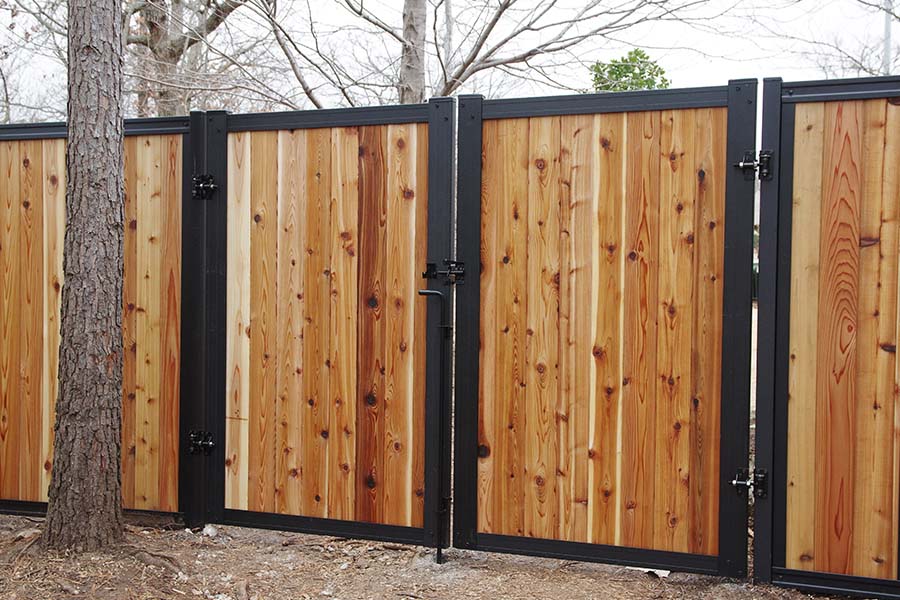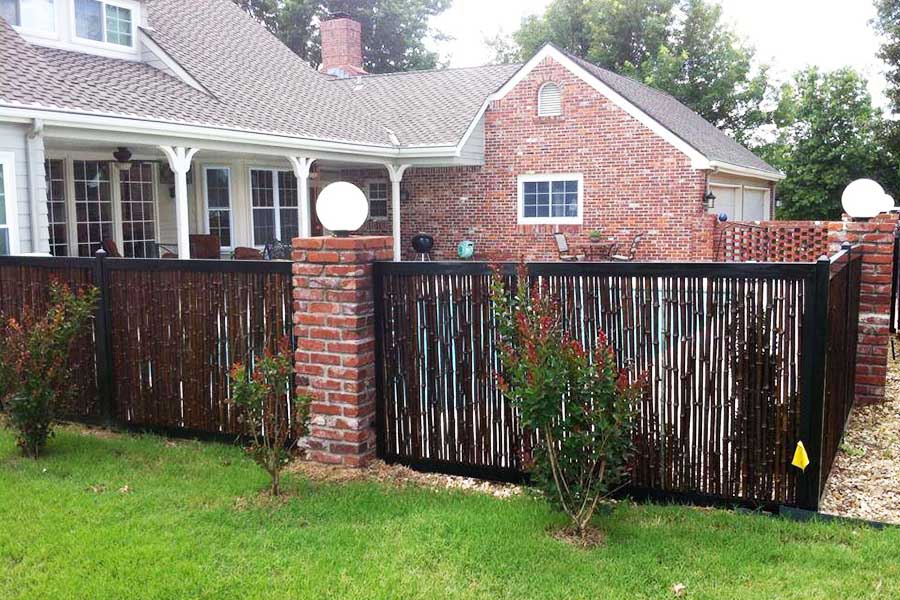All Categories
Featured
Your fencing is exposed to various climate condition year-round, and while it offers as a vital part of your residential or commercial property, it's likewise one of one of the most at risk aspects when it concerns weather-related damage. Harsh winds, hefty rain, severe temperature levels, and UV direct exposure can all take a toll on your fencing's integrity, leading to tear and wear. There are a few steps you can take to shield your fencing and prolong its life-span. Right here are some effective techniques to guard your fencing from weather-related damage.
Wooden Fencings: While timber is a traditional selection for fencing, it is prone to bug, rot, and warping damage, specifically in areas with high dampness. Pressure-treated timber or cedar is a lot more long lasting, yet regular maintenance is necessary to keep it in great condition. Vinyl Fencing: Vinyl is an outstanding option for those searching for a weather-resistant and low-maintenance fencing. It's unsusceptible dampness, will not warp or fracture in the warm, and withstands fading from UV rays. Metal Secure fencing: Wrought iron and light weight aluminum are long lasting products for fencing, however they require a rust-resistant coating to secure them from deterioration due to moisture. A safety finish or regular maintenance can prevent rust and prolong the life of steel fencings. Composite Fence: Made from a mix of wood fibers and plastic, composite fencings are highly resistant to weather components, consisting of moisture, warmth, and UV rays. This product supplies an equilibrium of toughness and visual allure. Selecting a product fit to your climate will certainly supply better protection for your surround the long-term.
Seal or Discolor the Timber: Using a high-quality sealer or discolor to your timber fence develops a waterproof obstacle that avoids wetness from going into the wood. It also helps secure the wood from UV rays, which can cause discoloration and drying. Reapply Sealer Consistently: In time, the protective barrier of your sealer or discolor can wear down. Depending upon your environment, it's a great concept to reapply every one to 2 years to keep the timber protected. This treatment will protect the fencing's appearance, prevent rot, and lengthen its life-span.
![]()
For extra security, consider making use of wind-resistant mesh displays or panels in areas where wind is a substantial issue. This extra layer can assist lessen the pressure that the wind applies on your fencing.
Examine Water Drainage: Make sure that the ground around your fencing slopes far from the messages. Correct drainage enables water to flow far from the fence, protecting against moisture accumulation. Mount Drain Solutions: In locations where drainage is a problem, consider including a French drain or crushed rock around the base of your fence articles to reroute water away from the framework. Great water drainage can avoid rot, corrosion, and various other kinds of weather-related wear and tear.
![]()
![]()
Concrete Grounds: Establish fence messages in concrete to stop them from loosening up gradually as a result of soil erosion or shifting ground. Steel Braces: Including steel braces to fencing articles can supply extra stamina and lower the danger of damaging or leaning. Enhancing your messages makes certain that your fence will certainly remain in place, even during extreme weather condition.
For wood fences, carefully wash the surface area with a moderate cleaning agent to get rid of dust and grime. For vinyl fences, utilize a soft towel and cleaning remedy to avoid buildup. For metal fences, check for rust and sand it off prior to using a fresh coat of paint. Conclusion. Your fence is an essential function of your building, and with the appropriate treatment, it can stand up to the difficulties presented by the climate. By picking long lasting products, doing regular upkeep, and strengthening powerlessness, you can safeguard your fencing from the components and extend its life. Regular assessments, applying safety coverings, and taking actions to control wetness and wind direct exposure will certainly assist make sure that your fence remains strong, practical, and appealing for years to find.
- Select Weather-Resistant Products. The products you pick for your fencing can have a significant influence on its ability to endure the components. Different products are much better outfitted to deal with particular climate condition. Here's a breakdown of just how different products stand up versus the weather condition:
Wooden Fencings: While timber is a traditional selection for fencing, it is prone to bug, rot, and warping damage, specifically in areas with high dampness. Pressure-treated timber or cedar is a lot more long lasting, yet regular maintenance is necessary to keep it in great condition. Vinyl Fencing: Vinyl is an outstanding option for those searching for a weather-resistant and low-maintenance fencing. It's unsusceptible dampness, will not warp or fracture in the warm, and withstands fading from UV rays. Metal Secure fencing: Wrought iron and light weight aluminum are long lasting products for fencing, however they require a rust-resistant coating to secure them from deterioration due to moisture. A safety finish or regular maintenance can prevent rust and prolong the life of steel fencings. Composite Fence: Made from a mix of wood fibers and plastic, composite fencings are highly resistant to weather components, consisting of moisture, warmth, and UV rays. This product supplies an equilibrium of toughness and visual allure. Selecting a product fit to your climate will certainly supply better protection for your surround the long-term.
- On A Regular Basis Treat Wood Fences. Shielding it from sunlight, moisture, and temperature fluctuations is essential if you have a wooden fence. Timber can take in dampness from humidity, rain, or snow, creating it to rot and degrade. Right here's just how you can secure wood fencings:
Seal or Discolor the Timber: Using a high-quality sealer or discolor to your timber fence develops a waterproof obstacle that avoids wetness from going into the wood. It also helps secure the wood from UV rays, which can cause discoloration and drying. Reapply Sealer Consistently: In time, the protective barrier of your sealer or discolor can wear down. Depending upon your environment, it's a great concept to reapply every one to 2 years to keep the timber protected. This treatment will protect the fencing's appearance, prevent rot, and lengthen its life-span.

- Install Windbreaks. Strong winds can cause significant damages to fencings, especially those made of tall frameworks or light-weight products. These natural obstacles can aid disperse wind, avoiding straight gusts from damaging your fence.
For extra security, consider making use of wind-resistant mesh displays or panels in areas where wind is a substantial issue. This extra layer can assist lessen the pressure that the wind applies on your fencing.
- Ensure Proper Drain Around Your Fence. Standing water is among the leading reasons for fence damage, especially for wooden fencings. Water can weaken the fence blog posts, triggering them to rot and wear away much more swiftly. To stop this:
Examine Water Drainage: Make sure that the ground around your fencing slopes far from the messages. Correct drainage enables water to flow far from the fence, protecting against moisture accumulation. Mount Drain Solutions: In locations where drainage is a problem, consider including a French drain or crushed rock around the base of your fence articles to reroute water away from the framework. Great water drainage can avoid rot, corrosion, and various other kinds of weather-related wear and tear.

- Trim Overhanging Branches and Vines. Trees and plants near your fence may feel like an ornamental addition, but they can position risks when left uncontrolled. Overhanging tree branches and creeping plants can cause damages to your fence throughout storms or high winds. Additionally, vines can trap wetness against wooden fencings, speeding up the decomposing process. To safeguard your fence, cut any branches or plants that hang over or near the fence routinely. This will certainly minimize the chance of dropping particles and prevent dampness build-up.
- Reinforce Fencing Posts. The stability of your fence mainly relies on the condition of the posts. Fencing posts are prone to shifting, leaning, and decaying, particularly during periods of severe weather condition. If your fence is in a location that experiences high winds or freezes during winter season, it is necessary to reinforce the blog posts to maintain stability. Some means to enhance your fencing articles consist of:

Concrete Grounds: Establish fence messages in concrete to stop them from loosening up gradually as a result of soil erosion or shifting ground. Steel Braces: Including steel braces to fencing articles can supply extra stamina and lower the danger of damaging or leaning. Enhancing your messages makes certain that your fence will certainly remain in place, even during extreme weather condition.
- Routine Assessments and Maintenance. Check your fencing after tornados or heavy rain to look for issues such as loosened boards, drooping posts, or rusted areas. Additionally, cleansing your fencing regularly aids maintain its condition.
For wood fences, carefully wash the surface area with a moderate cleaning agent to get rid of dust and grime. For vinyl fences, utilize a soft towel and cleaning remedy to avoid buildup. For metal fences, check for rust and sand it off prior to using a fresh coat of paint. Conclusion. Your fence is an essential function of your building, and with the appropriate treatment, it can stand up to the difficulties presented by the climate. By picking long lasting products, doing regular upkeep, and strengthening powerlessness, you can safeguard your fencing from the components and extend its life. Regular assessments, applying safety coverings, and taking actions to control wetness and wind direct exposure will certainly assist make sure that your fence remains strong, practical, and appealing for years to find.
Latest Posts
Don’t Miss Exclusive Auto Repair Offers in Chicago at Montclare Auto Repair
Published en
1 min read
Check Out the Best Auto Repair Offers in Montclare, Chicago
Published en
1 min read
Learn About Premier Auto Repair Care at Montclare Auto Repair – Expert Care for Your Vehicle
Published en
1 min read
More
Latest Posts
Don’t Miss Exclusive Auto Repair Offers in Chicago at Montclare Auto Repair
Published May 25, 25
1 min read
Check Out the Best Auto Repair Offers in Montclare, Chicago
Published May 24, 25
1 min read
Learn About Premier Auto Repair Care at Montclare Auto Repair – Expert Care for Your Vehicle
Published May 24, 25
1 min read